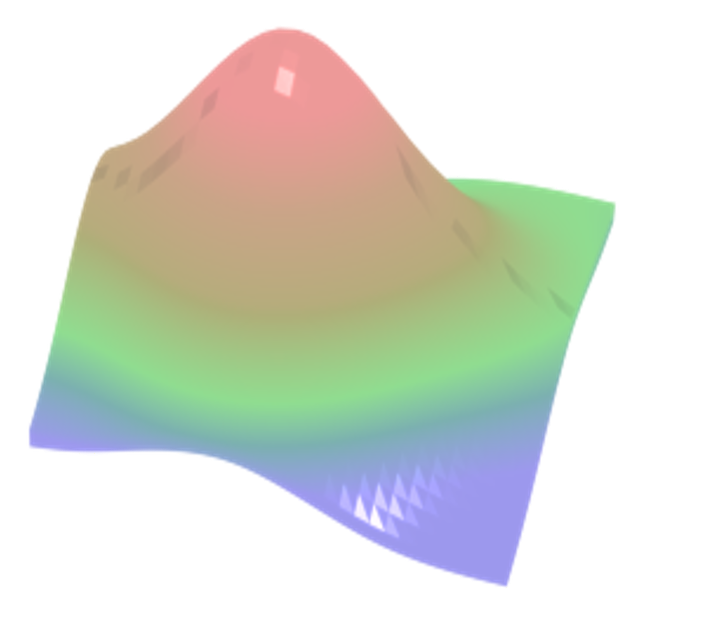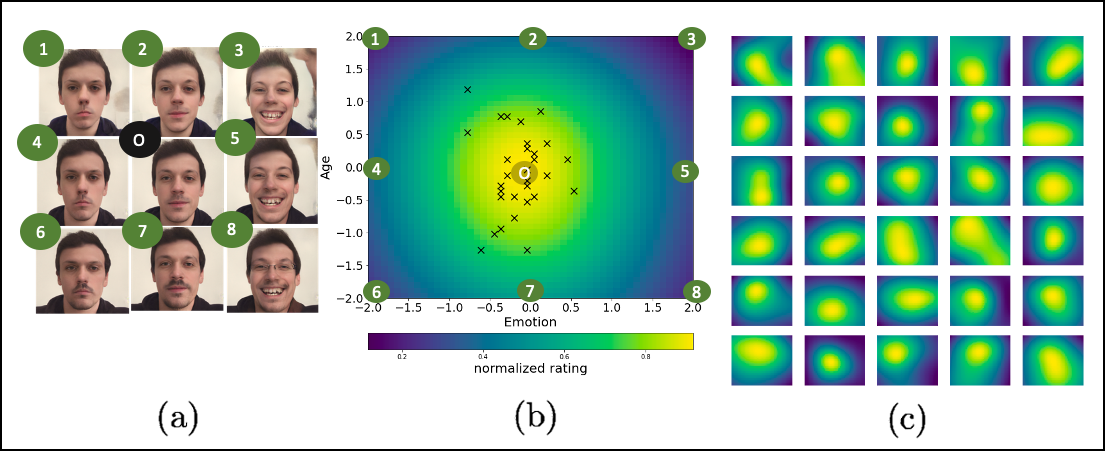
Bayesian Optimization is an efficient algorithm for sampling unknown costly functions to find its optimal value. It does so, by trading-off between exploitation and exploration through the use of an acquisition function and it requires a minimal number of samples. In neuroscience research, hypothesis testing is extremely costly (and exploration analyses has lead to bad science practices [ 1 ] ).
In my PhD research, one of my main focuses is to build convenient tools that empower the researcher to automatically navigate different hypothesis to solve a problem. I do so, by tackling 2 fields of research:
- Building a novel AutoML algorithm that organizes the configuration space of ML predictors borrowing from Collaborative Filtering research.
- Using Generative Adersarial Networks (GANs) to build semantically disentangled spaces of faces to optimize individual response.
The 2 sub-projects are detailed below.
ModelZoom
A data-driven approach for AutoML
ModelZoom is an AutoML tool that leverages the organization of the configurational space of pipelines to maximise information of each sampled pipeline. The configurational space is built by distilling meta-data from each single pipeline prediction on a number of dataset. The information is reduced from very high-dimensions to a low-dimensional configurational space using techniques from Collaborative Filtering.
This Euclidean space is used to maximise information obtained from sampling a given pipeline by assuming the correlation of prediction of neighbouring pipelines.
This work is currently under review for publication and was presented at the Machine Learning Summer School 2020 (MLSS2020). The video presentation can be accessed below.
FaceFitOpt
Optimizing neural data over facial stimuli

In this project we use Bayesian optimization to guide human neural and behavioural responses to facial stimuli in order to maximise different target metrics. The space of facial stimuli is organized by manipulating a GAN latent space trained on faces (FFHQ). In this project we present results from a web-based proof-of-principle study, where participants rated images of themselves generated via performing Bayesian optimization over the latent space of a GAN. We show how the algorithm can efficiently locate an individual’s optimal face while mapping out their response across different semantic transformations of a face; inter-individual analyses suggest how the approach can provide rich information about individual differences in face processing.
This work was published and presented at ICML@AutoML workshop. The oral presentation can be accessed below.
A second part of the project is to build a tool that leverages FaceFitOpt (Bayesian optimization and GANs) with real-time EEG to target a biomarkers ERP (event-related potential). This paper is currently under review.